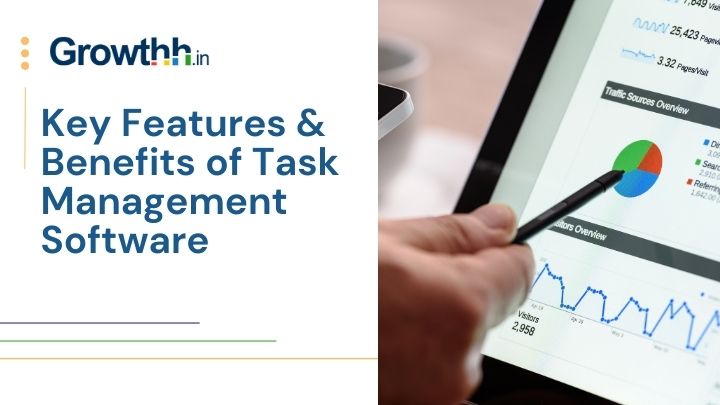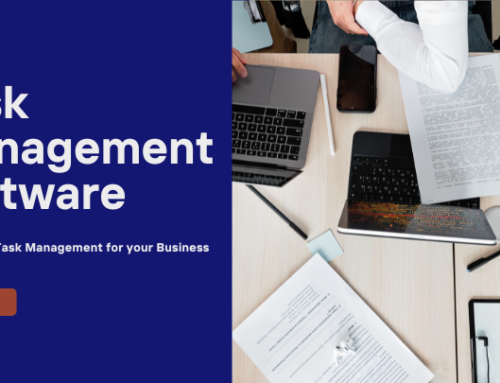Let’s face it: juggling projects, deadlines, and endless to-do lists can feel like herding cats. And in a world where everything seems urgent, it’s easy to feel swamped or even defeated by your workload. That’s where task management software steps in like a well-organized superhero. From keeping track of deadlines to coordinating team projects, task management software is designed to streamline your work and help you get things done with way less stress.
But what exactly is task management software, and how does it work its magic? This guide will dive deep into the world of task management tools, from essential features to hidden gems, so you can decide which software is best for you and your team.
What Is Task Management Software?
Breaking Down the Basics
Task management software is a digital tool that helps individuals and teams organize, prioritize, and manage their tasks efficiently. Whether you’re a solo freelancer or part of a large corporation, this software keeps you on track by allowing you to:
- Create and assign tasks
- Set deadlines and reminders
- Organize tasks by projects or categories
- Monitor progress in real-time
- Communicate and collaborate with others
Why Do We Need Task Management Software?
Think of it as your ultimate digital to-do list—except it’s a lot more powerful. When it comes to managing projects and responsibilities, task management software keeps everything centralized, reducing the back-and-forth emails, lost sticky notes, and vague meeting minutes. Plus, for remote teams, it’s a lifeline that ensures everyone’s on the same page (even if they’re halfway across the world).
Key Features to Look For in Task Management Software
Finding the right task management software can feel like dating—there are so many options out there, but you want one that matches your needs. Let’s break down some must-have features to help you find “the one.”
1. Task Creation and Assignment
Creating and assigning tasks is the bread and butter of any task management tool. Look for software that makes task creation quick and intuitive and allows you to assign responsibilities with just a few clicks.
2. Deadlines and Reminders
What’s a task management tool without deadlines and reminders? The best software will let you set deadlines and notify you (or the team) before tasks are due. Some tools even allow customized notifications, so you get reminders the way you prefer—email, SMS, or push notifications.
3. Priority Levels and Labels
Life is full of priorities, and so is task management. Look for software that lets you set priority levels, add tags or labels, and organize tasks by project or team. Having these categorization options makes it easy to sift through what’s urgent and what can wait.
4. Visual Layout Options
A solid task management tool will offer multiple views, such as:
- Kanban Boards: Great for seeing workflow stages at a glance
- Calendars: Ideal for tracking deadlines
- List View: Perfect for a simple, itemized list of tasks
- Gantt Charts: Excellent for long-term project planning
Choose the layout that aligns with your work style, or better yet, find a tool that offers flexibility across multiple views.
5. Collaboration Tools
The best task management software isn’t just for managing your own to-do list—it’s designed for teamwork. Collaboration features like in-task comments, @mentions, and file attachments keep everything in one place, so you’re not hunting down info in email threads or multiple apps.
Benefits of Using Task Management Software
So, why take the plunge into the world of task management software? Here are a few big advantages:
Boosted Productivity
With everything organized in one place, you’re free to focus on actual work rather than just figuring out what you’re supposed to be doing.
Better Time Management
Task management software helps you see where your time is going, letting you allocate time to important tasks rather than constantly putting out fires.
Reduced Stress
Having a clear, organized plan reduces mental load. When you’re not trying to remember every little detail, you’re less likely to feel overwhelmed.
Improved Accountability
With assigned tasks and visible deadlines, it’s clear who’s responsible for what and when. This visibility is a game-changer for team accountability.
Tips for Getting the Most Out of Your Task Management Software
1. Set Up Your Projects and Categories Early
Organize tasks by creating project folders or boards from the get-go. This setup will make tracking tasks and progress easier as you add more details to each project.
2. Use Deadlines Wisely
Set realistic deadlines to avoid burnout. It’s tempting to cram everything in, but spreading out tasks helps you stay productive without feeling overwhelmed.
3. Delegate and Assign Properly
In a team setting, make sure each task has a clear owner. Even if collaboration is involved, a designated point person ensures accountability and keeps tasks moving forward.
4. Leverage Automation
Some software, like Monday.com or ClickUp, offers automation that can simplify your workflow, from sending reminders to moving tasks across stages. Setting up automations once can save you hours down the line.
5. Regularly Review and Adjust
As projects evolve, so should your tasks and priorities. Set aside time to review tasks, update statuses, and shift deadlines if needed. Keeping things up-to-date helps avoid last-minute scrambles.
Frequently Asked Questions (FAQs)
Q1: What’s the difference between task management and project management software?
Task management software focuses on individual tasks, while project management software includes additional features for handling larger project elements like resource allocation and budgeting. Some tools do both!
Q2: Is free task management software any good?
Absolutely! Tools like Trello and Asana offer robust free versions that work well for individuals and small teams. However, larger teams or advanced users might benefit from paid versions with extra features.
Q3: How can task management software help remote teams?
For remote teams, task management software acts as a virtual office, helping everyone stay organized and in sync. Features like real-time updates, collaborative workspaces, and communication tools keep remote teams connected and productive.
Q4: Which task management tool is the best for beginners?
Trello is a fantastic choice for beginners due to its simple drag-and-drop functionality and visual Kanban board style. Asana is also beginner-friendly, especially if you’re looking for a straightforward layout with good collaboration features.
Q5: Can task management software integrate with other tools?
Most task management software integrates with other tools like Slack, Google Calendar, and Microsoft Teams. These integrations enhance productivity by reducing the need to switch between platforms.
Conclusion
Task management software has become a staple in today’s fast-paced, digital work environment. From managing personal tasks to coordinating team efforts across time zones, these tools help you stay organized, boost productivity, and keep your stress levels in check. By understanding what features are available, you’ll be able to choose a tool that fits your workflow and maximizes your efficiency.
So go ahead—explore the options, dive into the features, and transform how you manage your tasks. With the right task management software, you’ll be ticking off your to-do list like a pro, all while enjoying the peace of mind that comes from having a well-organized plan.




[…] Previous […]